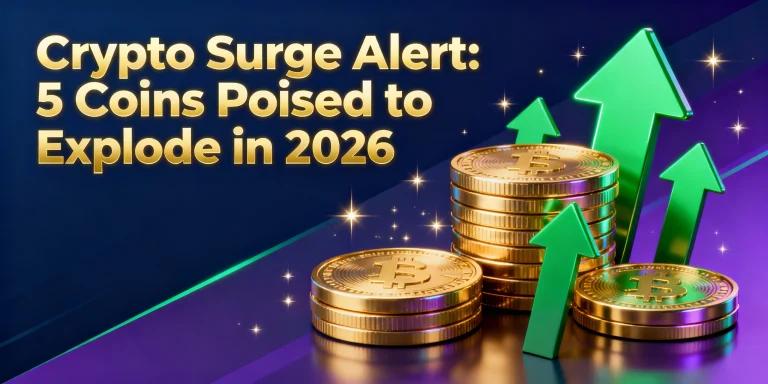Upcoming ICO Revival: Sustainable Tech Gains Momentum
Sustainable tech ICOs gain traction in 2025 as energy-efficient blockchains, ESG-focused projects, and transparent fundraising models rise. Investors show renewed interest, but careful evaluation and regulatory compliance remain essential.

The cryptocurrency market has shown notable recovery in 2025, with institutional activity returning and retail participation gradually increasing after a quieter period. One trend gaining attention is the renewed use of initial coin offerings (ICOs) as a fundraising method, particularly among sustainable technology initiatives.
Unlike the 2017–2018 period, when many ICOs lacked clear utility, the current generation places greater emphasis on regulatory alignment, real-world use cases, and measurable environmental impact. Projects focused on energy efficiency and sustainability have become a prominent segment, attracting interest from funds exploring environmentally responsible blockchain applications.
Market Drivers Behind the Shift
Industry observers highlight three key factors contributing to the renewed interest in ICO models:
- The introduction of regulated Bitcoin and Ethereum investment products across major jurisdictions has provided greater clarity for institutions.
- The industry-wide move toward energy-efficient consensus mechanisms has reduced earlier environmental concerns.
- Increased adoption of blockchain for carbon-credit verification and renewable-energy tracking has created new on-chain demand.
These elements have encouraged sustainable-tech teams to consider ICOs as one of several capital-raising options in 2025.
Why Sustainable Tech Is Gaining Traction
Sustainable blockchain projects are addressing dual challenges: environmental accountability and the demand for transparent digital infrastructure. According to several market reports, offerings linked to renewable energy, supply-chain traceability, or emissions tracking have seen stronger early engagement compared to general Web3 categories.
Preliminary industry data from 2025 suggests that ESG-oriented token sales may be attracting comparatively higher participation, though the segment remains highly varied in structure and maturity.
Characteristics Seen in Recent Sustainable ICOs
Common features appearing across many of these offerings include:
- Teams with prior experience in energy, engineering, or climate-tech sectors.
- Early KYC/AML integration and use of compliant jurisdictions or exemptions.
- Token models that emphasize longer vesting schedules, transparent distribution, and environmental-linked mechanisms.
Carbon-Negative Networks Emerge
A number of new blockchain networks are positioning themselves as carbon-neutral or carbon-negative from launch. These projects typically rely on third-party offset providers or integrated environmental fees. While some institutional participants view these features positively, verification methods and offset quality can vary widely.
Decentralized Renewable-Energy Financing
Projects exploring tokenized financing for solar, wind, or micro-grid infrastructure continue to appear in the market. These platforms aim to enable broader participation in energy-related funding, though outcomes depend heavily on regulatory conditions, project execution, and local permitting.
Supply-Chain and ESG Reporting Tools
As companies adapt to emerging disclosure rules in regions such as the EU and U.S., blockchain-based reporting tools are being evaluated as potential solutions. Some ICOs in this category focus on emissions data, audit trails, or sustainability-linked analytics. Funding sizes differ significantly depending on sector, partnerships, and audit readiness.
Waste-to-Energy and Circular-Economy Initiatives
Certain projects linked to methane mitigation, recycling, and circular-economy infrastructure are gaining early interest. These initiatives generally emphasize long-term environmental outcomes and may involve partnerships with municipalities or industrial operators.
ReFi and DeFi Convergence
Regenerative finance (ReFi) concepts—where a portion of protocol activity supports environmental efforts—continue to evolve. Participants in the space note growing involvement from family offices, climate-tech communities, and universities, though these models remain experimental.
Key Risks Remain
Despite improved fundamentals in some areas, ICOs carry substantial risks:
- Smart-contract vulnerabilities
- Shifts in regulatory interpretation
- Execution challenges, especially for projects tied to physical infrastructure
- Verification of environmental metrics
Market analysts recommend reviewing audits, checking offset registries, and confirming governance and vesting structures before participating in any offering.
Evaluating Sustainable ICOs

Due-diligence considerations often include:
- Whether the project addresses a clearly defined need.
- Clarity around potential revenue sources or utility.
- Availability of open-source code and independent audits.
- Long-term vesting and transparent governance.
- Presence of risk-mitigation measures such as insurance, audits, or external partners.
Independent listing platforms can help users compare upcoming ICO offerings and analyst ratings across the market.
Regulatory Landscape
Regions with clearer digital-asset frameworks—such as the EU, Singapore, and certain U.S. exemptions—continue to be common destinations for sustainability-focused blockchain projects. Proactive regulatory engagement is often cited as a factor that reduces compliance uncertainty.
Institutional Interest
Some financial and energy organizations are exploring green blockchain infrastructure or pilot programs connected to sustainability initiatives. Participation varies by firm and region, and most remain in early-stage or exploratory phases.
Developer Activity
Climate-and sustainability-centric hackathons and testnets appear to be attracting steady developer participation. These ecosystems focus on building tools for emissions data, renewable-energy tracking, and environmental verification.
Conclusion
The 2025 ICO environment reflects a maturing landscape where sustainability and blockchain innovation intersect. While interest in climate-aligned digital assets is increasing, the sector remains high-risk and requires careful evaluation. Projects that balance transparent governance, realistic goals, technical audits, and environmental verification may be better positioned as the market continues to evolve.
Follow us on Google News
Get the latest crypto insights and updates.
Related Posts

Strategies to Improve Your Performance in Online Crypto Game Systems
Coinfomania News Room
Author

Crypto Surge Alert: 5 Coins Poised to Explode in 2026
Coinfomania News Room
Author

Bitfarms’ AI Pivot Reflects Broader Shift in Computing Infrastructure; Cloud Mining Platform Eden Miner Notes Steady Retail Participation Trends
Coinfomania News Room
Author